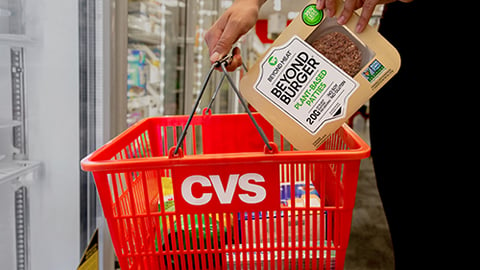Frozen Food Demand Holds at Very High Levels
Frozen foods proved to be a pandemic powerhouse in 2020, when concerned consumers stockpiled their freezers with longer shelf items during the height of lockdowns. While consumer concern is declining as the number of new COVID-19 cases decrease, frozen food sales continue to be robust versus the 2019 pre-pandemic normal, according to American Frozen Food Institute’s (AFFI) 2021 "Power of Frozen" report.
The second annual report combines the results of more than 1,500 consumer surveys with retail measurement and consumption data from Chicago-based IRI. Done in partnership with Arlington, Va.-based FMI – the Food Industry Association the report aims to bring an understanding of consumers' perceptions, attitudes and behaviors regarding frozen food.
Further, the 2021 "Power of Frozen" report shows that consumers are invested in their frozen foods. Preparing more meals at home during the pandemic highly favored frozen foods and their longer shelf life — and even prompted consumers to invest in additional freezer space. The report found that 30% of Americans expanded their freezer capacity by adding a second fridge/freezer combination or a stand-alone freezer in 2020.
Not letting their investment go to waste, consumers continue to highly engage with the frozen food aisle. Over the last 52 weeks ending late May 2021, frozen food sales are still up 9.2% versus the same period a year ago. This is 4% higher than the 5.8% increase in sales seen for all foods and beverages.
Additionally, in May of 2021, frozen foods were still 22.6% over and above their 2019 pre-pandemic baseline. This is still much higher than the 14.8% increase in sales for total foods and beverages. Across all 2021 months to date, frozen food gains have consistently been above 20% versus 2019, with matching unit and volume gains.
|
52 Weeks Ending May 30, 2021 |
||
|
Dollar Sales |
Dollar Gains Versus YA |
|
|
All Foods and Beverages |
$666 Billion |
5.8% |
|
Frozen Foods |
$65 Billion |
9.2% |
Source: IRI, MULO
The following are a few of the growth drivers that prove the demand for frozen foods will remain:
- The three levers of growth: Every brand, product or category has three ways to increase sales: having more people buy, having people buy more and having people buy more often. Frozen food sales gains are the result of hitting this growth trifecta. Virtually every frozen food category saw an increase in household penetration, trips and the average basket size — an accomplishment not all departments can boast.
- The 360 win: Many categories play in breakfast versus dinner or indulgence versus health. But frozen foods cover it all: functionality, indulgence and variety. Lunch became a huge growth opportunity during the pandemic, as consumers emphasized time and convenience. With many more consumers continuing to work from home part or all of the time, frozen foods are expected to continue to make inroads across meal occasions.
- Online food and beverage growth: While all retail channels gained over the past 15 months, it was food e-commerce that exploded, with a 2020 gain of 84%, according to IRI. Online now represents about 10% of all food sold in the United States. Also, online growth has not yet plateaued, with expected market penetration of about 12% by the end of 2021. Here, too, frozen foods ride a growth trend, with very high online conversion and penetration.
The 2021 "Power of Frozen" report shows particular strength in frozen seafood and meals.
|
52 Weeks Ending May 30, 2021 |
||
|
Dollar Sales |
Dollar Gains Versus YA |
|
|
Frozen Foods |
$65 Billion |
9.2% |
|
Frozen Meals |
$22 Billion |
6.7% |
|
Frozen Meat/Seafood/Poultry |
$16 Billion |
13.8% |
|
Frozen Desserts |
$14 Billion |
8.9% |
|
Frozen Fruits/Vegetables |
$7 Billion |
6.2% |
|
Frozen Snacks |
$3 Billion |
16.1% |
|
Frozen Baked Goods |
$2 Billion |
5.2% |
|
Frozen Beverages |
$0.3 Billion |
12.0% |
Source: IRI, MULO
The 2021 "Power of Frozen" report also points out that as many areas of the store see their sales growth percentages boosted by high levels of inflation, frozen food prices are slightly less than what they were in the late spring of 2020.
Arlington, Va.-based AFFI advocates before legislative and regulatory entities on the industry’s behalf, serves as the voice for the category and convenes business leaders to create an environment where frozen foods are essential in a dynamic marketplace.






